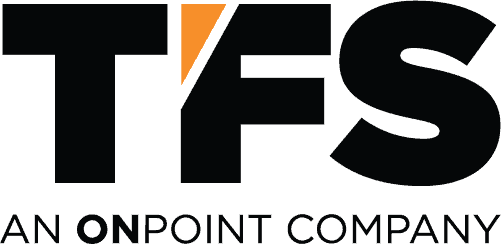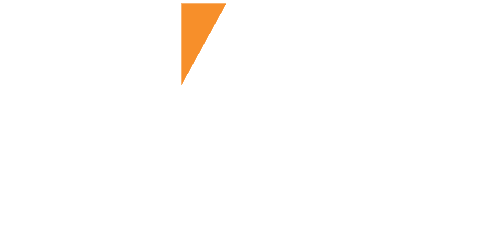 In the market for a new forklift? Be prepared to wait. With order lead times stretching from six months to over a year (and beyond), companies waiting to replenish their fleet are challenged to make do with what they have until their shipment comes in.
In the market for a new forklift? Be prepared to wait. With order lead times stretching from six months to over a year (and beyond), companies waiting to replenish their fleet are challenged to make do with what they have until their shipment comes in.
“Before this, a lot of companies were used to being reactionary with their orders because the supply chain was so wide open and you could get your hands on the things that you needed within the relative time frame,” says Ryan Boyd, TFS Vice President, Racking and Automation. “With today’s supply chain issues and lead times, companies need to be more proactive and think about the bigger picture sooner rather than later.”
The best time to put in an order for a new forklift or key piece of equipment was yesterday—and even then, there are no guarantees about timing. However, it’s important to put those orders in asap, if you haven’t already. In the meantime, it’s crucial to optimize existing fleets and operations to make the wait more bearable.
“A lot of our customers are asking what they can do around lead times, and the good news is that we can do quite a bit to extend the life of their current fleet, lower their costs, and give them options they may not have considered,” says Nate Josic, TFS Regional Vice President.
1. Re-examine your leases: While waiting to fill gaps in your fleet, it’s possible to refinance or extend the leased equipment you currently own. You may also consider changing the utilization expectations on a lease to better reflect what’s happening on the warehouse floor.
For example, says Josic, “We can collect data on how and when forklifts are being used in an individual facility and use that to change the utilization terms, which could potentially save costs.”
One important note: be sure to put metrics in place so you aren’t penalized for overuse and end up paying more than you should on your leases.
2. Broaden your OEM horizons: Now may be a good time to search out suppliers or original equipment manufacturers (OEM) with shorter lead times. For example, one manufacturer had some regulatory issues, which resulted in a stockpile of inventory and shorter lead times than other brands, at least for now. Switching brands can feel a bit uncomfortable – especially if the partnership has existed for a while – but it’s worth exploring to avoid downtime and additional, unforeseen costs.
Josic says that he’s seeing many companies seize this moment to convert to electric; one of the few bright spots is that sustainability initiatives are maintaining momentum, despite the obstacles.
“It may be a little bit more of an investment, but it could also be a good option when compared to the lead times and skyrocketing costs that come with the alternatives,” Josic said. “It doesn’t have to be a very complicated transition either,” he adds. “A fleet manager can help make the switch as painless as possible.”
3. Convert rentals: If a company has a rented fleet or uses rentals, it may have the option to buy those from the rental supplier and put them on a lease. This is another place where a forklift fleet management specialist can help with negotiations and financing strategies.
4. Repurpose from other facilities: One facility’s forgotten equipment may be another warehouse’s treasure. Take a bird’s-eye view of your operations to see where unused or underutilized pieces of equipment are collecting dust and where they can be of better use. For example, many companies lack both a fleet inventory and holistic data from all their facilities. Once companies know what assets they have on hand, they should consider utilization, maintenance trends, and equipment condition, then redistribute assets as needed.
“You may discover that the assets you need in one warehouse are two states over in another site and not being used for one reason or another,” says Josic. “By gaining a more holistic view, you can repurpose those assets, get them to where they’re needed most, and avoid the new procurement costs or the new lease costs of getting a new asset.” That’s where TFS can quickly step in and conduct a fleet assessment to provide you with a transparent view into your fleet and make data-driven, informed decisions from there.
5. Shop the used market: New equipment is likely either unavailable or on back-order. Consider looking within the used market to bridge the gap. This may mean paying higher-than-usual prices, but it can help maintain uptime until you receive new equipment. Before shopping, conduct some market research and be open to looking outside of preferred brands and suppliers. This is often the perfect reason to use a fleet manager who has expertise regarding different types of assets and brands and a network of suppliers to match.
6. Sell unused units: Facility closures or slowdowns can leave companies paying for forklifts and equipment they aren’t using. A comprehensive inventory assessment may reveal an opportunity to remarket and sell underutilized assets to gain some relief. For example, TFS often helps clients by reselling assets to other clients who need used equipment to tie them over.
7. Extend the life of your current assets: The last thing a company needs when waiting for a piece of equipment is to have another asset breakdown. That’s why maintenance – and especially preventative maintenance – is more important than ever.
Even so, says Josic, “The customers who are handling their maintenance themselves seem to be experiencing more pain related to breakdown and repairs. That’s why one trend we’re seeing is utilizing outside maintenance providers to help keep their fleet up and running.”
Entrusting an outside specialist to handle critical maintenance tasks can grant peace of mind, as well as increased uptime.
“As an example, our GuaranteedPower® program is becoming a valuable tool for our customers because it lets them offload all their forklift power maintenance tasks onto our team for one monthly payment,” Josic says, noting. “It doesn’t necessarily fix their issues with their aging fleet, but it does keep their current fleet running until they can get new equipment in.”
8. Re-examine workflows and production: Companies can save time and resources by rethinking their current operations. Take a closer look at workflows, racking, and other warehouse functions to find ways of working smarter and faster.
Boyd points out that companies should be putting together system-driven processes that allow them to be truly cognizant of what’s going on in their business. For example, he recently helped a company reconfigure to be more efficient, with less wear and tear on assets.
“In this case, management really needed an unbiased outside perspective to help them reimagine what they’re doing,” Boyd said. “I’m finding that, in this time of crisis, companies are getting smarter and they’re being more proactive than they ever have been.”
9. Reconsider your space: More effective racking strategies can create space, maximize efficiency, and reduce demands on equipment.
For example, says Boyd, “I was in a wholesale factory where they had run out of room. We suggested adding an extension on their uprights and another beam level, giving them space for another 1100 pallets. And, because going up meant they’d have to go with reach trucks over sit-down trucks, they gained two more aisles on both sides of the warehouse, which added 25% more space.”
“Racking makes a significant difference when done right,” he adds. “The key is getting in there and seeing what can be done.”
10. Consider Automation to Tackle Labor Challenges: With skilled talent getting harder to find, many companies are taking a serious look at bringing automation into the fold. In the past, companies could solve productivity problems by hiring more people, but the pandemic means that’s not possible for many reasons, including The Great Resignation.
Automation is a hot topic right now, because it can solve that labor gap. “Smart” machines can guide a broader employee population through tasks.
The best solution obviously varies from company to company but is probably a combination of some or all of these strategies. Our best advice? Order now! At least that way, you’ll know that new assets are coming, even if not on your ideal schedule. Order times won’t be getting shorter anytime soon.
And, since there’s no clear end in sight to the supply chain crisis and equipment down time disruption is on the horizon, also take a deep breath and regroup. These past two years have taught us to expect the unexpected; to be prepared, you should take fleet inventory now and gather data. Remember, a fleet management partner like TFS can offer industry expertise and advice, so reach out if you would like to talk through solutions and financing that align with your business needs.

